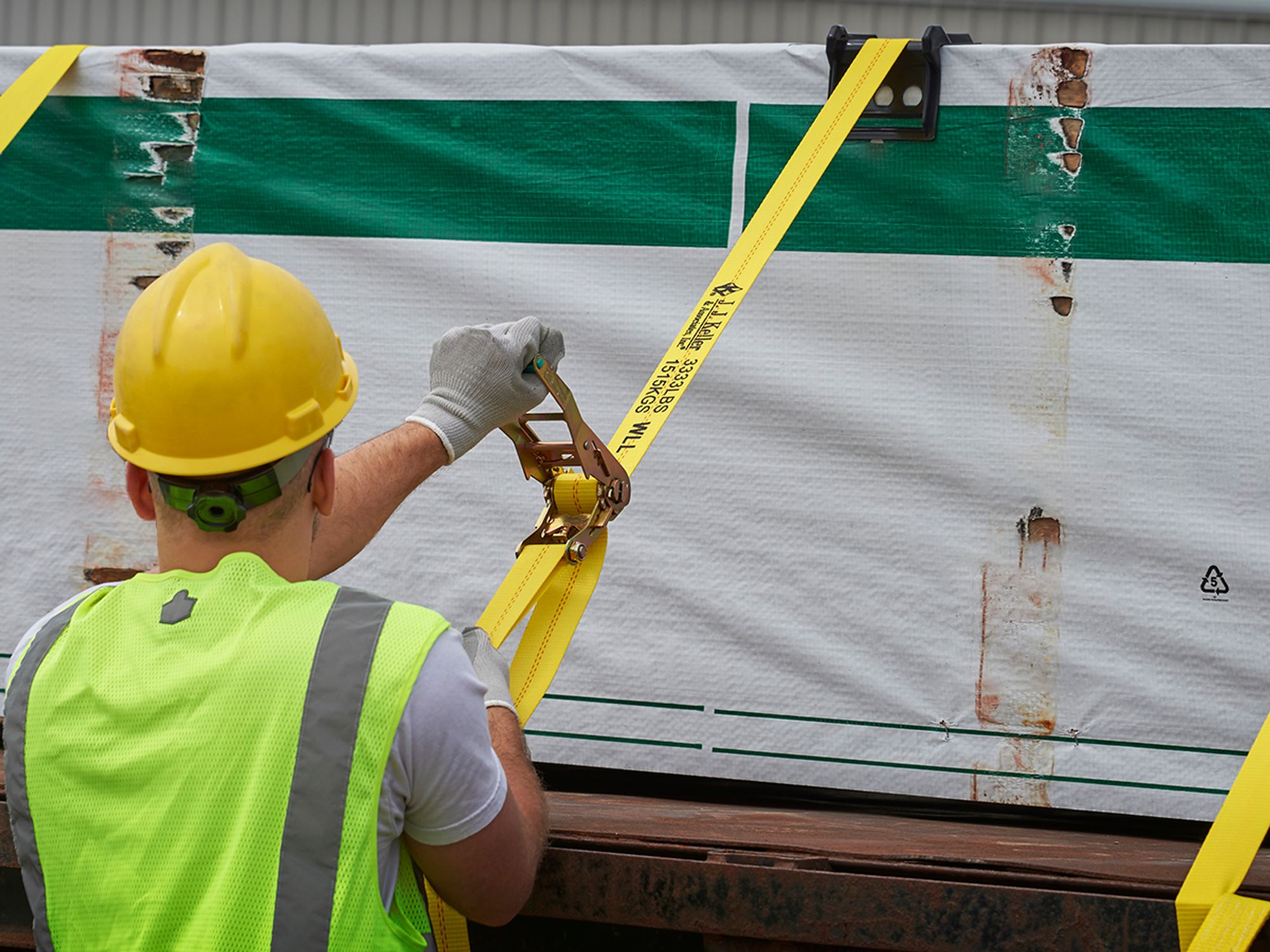Tiedown standards and minimums

- Tiedowns and related components must meet certain safety standards.
- The minimum number of tiedowns needed for an article of cargo depends on the cargo’s weight, length, and placement.
- Front-end structures are not required on a CMV.
Tiedown standards
Tiedowns and related components must meet the following standards:
- Tiedowns and associated connectors and mechanisms (except steel strapping) must allow for in-transit adjustment.
- Tiedowns must be attached and secured in a way that prevents them from becoming loose, unfastening, opening, or releasing while in transit.
- Tiedowns cannot be used if they have any knots.
- If a tiedown is repaired, it must be repaired in accordance with accepted manufacturing standards.
- Edge protectors must be used whenever a tiedown is subject to abrasion or cutting at the point where it touches an article of cargo.
- The minimum performance criteria for tiedowns, based on forces of acceleration and deceleration, are found in 49 CFR 393.102.
Minimum number of tiedowns
The minimum number of tiedowns needed for an article of cargo depends on the cargo’s weight, length, and placement.
When an article is not blocked or positioned to prevent forward movement by a headerboard, bulkhead, other secured cargo, or other appropriate blocking devices, it must be secured by at least:
- One tiedown for articles five feet (1.52 meters) or less in length, and 1,100 pounds (500 kg) or less in weight;
- Two tiedowns if the article is:
- Five feet or less in length and more than 1,100 pounds in weight, or
- Longer than 5 feet, but less than or equal to 10 feet (3.04 meters) in length, irrespective of the weight;
- Two tiedowns if the article is longer than ten feet and one additional tiedown for every ten feet of article length, or fraction thereof, beyond the first ten feet of length.
If an article of cargo is blocked, braced, or immobilized to prevent forward movement, it must be secured by at least one tiedown for every 10 feet of article length, or fraction thereof. For example, a 26-foot item of cargo placed against a bulkhead must be secured with at least 3 tiedowns (and the aggregate working load limit (WLL) of those tiedowns must be at least one-half of the cargo weight).
Front end structures
Front-end structures are not required on a CMV. However, if a front-end structure (like a bulkhead or headerboard) is used to prevent forward movement of cargo, then that structure must meet the standards in 393.114. The structure must:
- Extend either four feet above the floor of the vehicle or to a height at which it blocks forward movement of any item or article of cargo being carried on the vehicle, whichever is lower.
- Be at least as wide as the vehicle or wide enough to block forward movement of any article of cargo being carried on the vehicle, whichever is narrower.
- Be designed, constructed, and maintained so that it is capable of resisting penetration by any article of cargo that contacts it when the vehicle decelerates at a rate of 20 feet per second, per second.
- Have no openings large enough to allow any article of cargo in contact with the structure to pass through it.
- Be capable of withstanding the following horizontal forward static load:
- If the structure is less than six feet tall, a load equal to one-half of the weight of the articles of cargo being transported on the vehicle uniformly distributed over the entire portion of the front-end structure that is within 4 feet above the vehicle’s floor (or at or below a height above the vehicle’s floor at which it blocks forward movement of the cargo, if lower); or
- If the structure is at least six feet tall, a load equal to 40 percent of the weight of the cargo when the cargo is uniformly distributed over the entire front-end structure.
Substitute devices can be used if the devices are at least as strong as, and provide protection against shifting articles of cargo at least equal to, a front-end structure which complies with the requirements listed above.
